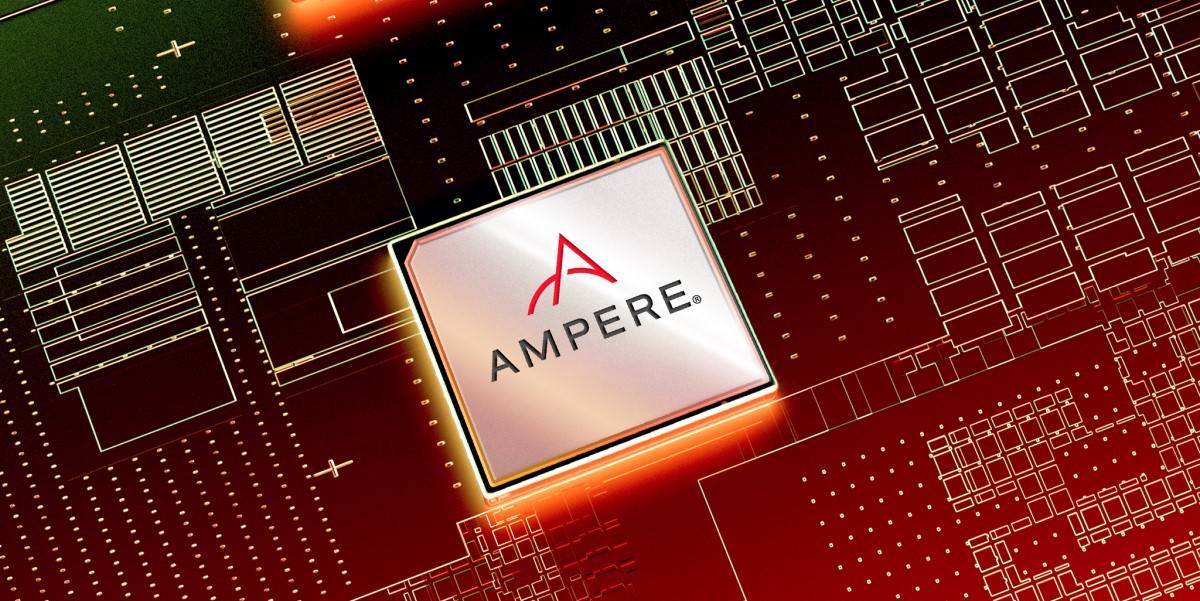
Interview Arm-based server chip outfit Ampere's chief product officer says its licensing with Arm is not changing, as the company prepares to launch the latest processors built with its own fully custom core design.
Ampere celebrated the fifth anniversary of its founding this month by former Intel president Renée James, and in that time has managed to achieve what many other Arm chip startups failed to do: get their silicon adopted by tier one vendors and by most big cloud providers.
Jeff Wittich, chief product officer at Ampere and another Intel veteran, tells The Reg that the company’s Ampere One processor is still on track for delivery before the end of the year.
Wittich also says that as far as he knows, Arm’s licensing policy is not changing.
This refers to the current legal spat between Arm and Qualcomm over licensing, as part of which Qualcomm has alleged that Arm wants to overturn its existing model of licensing to chipmakers and instead charge device manufacturers for using Arm-based silicon.
“I can't really comment much. I've obviously read the court filings and everything so I can see what they're each asserting, but what I can say is that I haven't seen anything like that on my side,” Wittich says.
“I don't know what's true, or what's going on over there, but I can say that, for us there's no changes whatsoever to our licensing."
Ampere has an architectural license, which means the company is allowed to design its own cores that use the Arm instruction set, instead of just building a chip around a core design supplied by Arm itself.
This allows Ampere to build a chip that better aligns with what it understands customers want, and in this case, it is the cloud providers and hyperscalers that Ampere has its eye on with Ampere One, which has been sampling since the early part of this year.
Wittich, who was responsible for Intel’s cloud business before joining Ampere, reiterates that there are unique needs that cloud customers have that are different from what enterprise customers prioritize.
“It’s things like power management capabilities that just look different from those used in fairly low utilisation CPUs in enterprise deployments, and they are looking for specific types of isolation features, and specific capabilities that would allow them to better track what's happening within the CPU,” he says.
Those power management facilities are less focused specifically on saving power, as you would see in an Arm chip in a smartphone or mobile device, where the chip goes into an idle mode or sleep mode whenever it can.
“In the cloud, it's kind of the opposite problem. You want to make sure that you're actually running at full utilization all the time, and then you can easily scale out to utilize every single core, because that's going to lead to the best efficiency. If you can run it close to 90 percent utilization, that's just inherently going to be more efficient than a processor that can only run at say, 40 to 50 percent utilization,” Wittich explains.
Then there is the isolation capability, which isn’t so much about protecting workloads from accessing each other’s data as ensuring workloads on the same CPU don’t impact each other’s performance.
“What we're expecting is that customers will be running lots and lots of VMs. Maybe they're running 100 VMs on one of our processors, and maybe it's not the same person, maybe it's 100 different people all running a VM, so what you want to make sure is that you don't end up with a lot of resource contention between those users, which is the “noisy neighbour” problem,” Wittich says.
For this reason, the Ampere CPU cores are single-threaded, he explains.
“You don't want multiple threads running on a single core when you're running in a shared cloud environment, because that just creates contention. You put two people on the same core, and then they're fighting over resources.”
However, Ampere will deliver confidential computing capabilities in future, Wittich says, as cloud providers want this ability.
“Today, what we’ve really focused on is a lot of security isolation, and avoiding things like side channel attacks as much as possible. We have a much smaller attack surface because we just don't have a lot of physical sharing of resources between users,” he claims.
As for the tracking capabilities, these are telemetry features that enable the cloud operator to better optimize resource utilization and get a more fine-grained picture of what is going on inside the CPU.
“It helps to ensure that there isn't any kind of unfair resource allocation, it helps to ensure that you've got consistent bandwidth and traffic around all the cores, so you don't end up with congestion within the mesh, given how many cores you have, and how much traffic is actually coming in, that's really important,” Wittich says.
But Ampere is still keeping some details of its next-gen server chips under wraps, including precisely how many cores it will have. Renée James previously said the 5nm chip will boast a higher core count than the existing 128-core Altra Max, but exactly how many has not been disclosed.
“We've got it out with a bunch of customers, so I guess we'll see when they decide to bring it out,” Wittich says. “I was at the OCP Summit and showed off a board there that is, a next-gen platform with DDR5 and PCIe Gen 5. So things are moving along really fast, and we'll see when the first customers want to want to go public with what they've got deployed with Ampere One, but yeah, it's coming up soon.” ®
"chips" - Google News
November 09, 2022 at 04:30PM
https://ift.tt/j1IK6zT
Ampere says no changes to its Arm licensing as it readies new chips - The Register
"chips" - Google News
https://ift.tt/HY6MgtF
https://ift.tt/vr8B5Fh
Bagikan Berita Ini














0 Response to "Ampere says no changes to its Arm licensing as it readies new chips - The Register"
Post a Comment